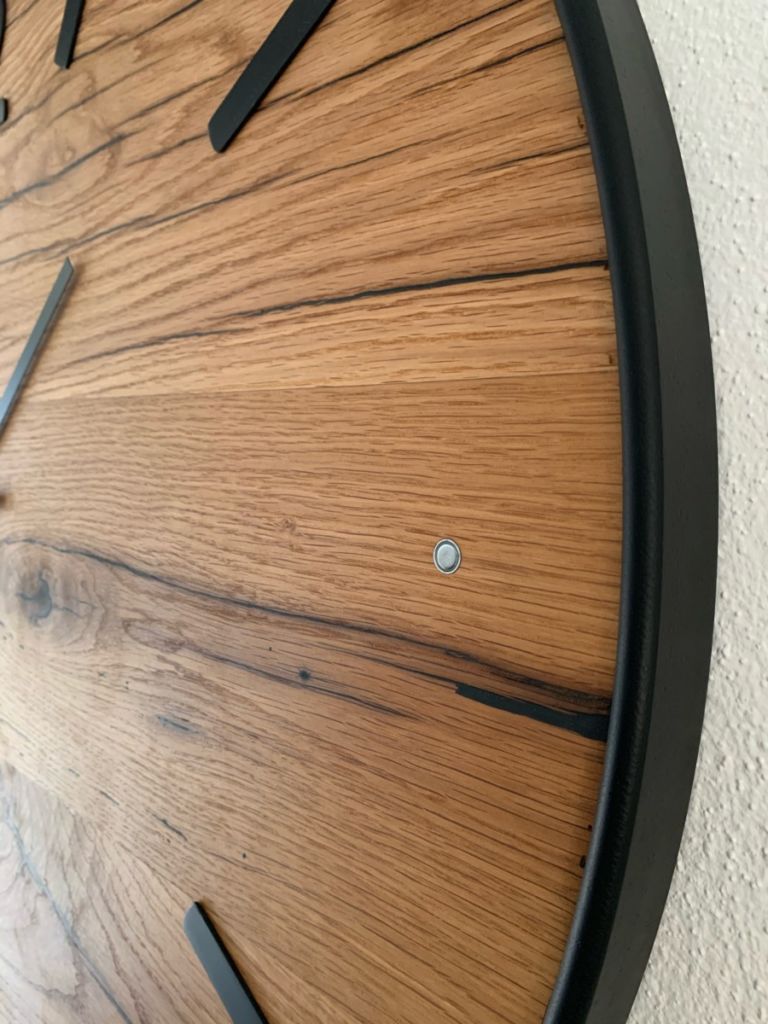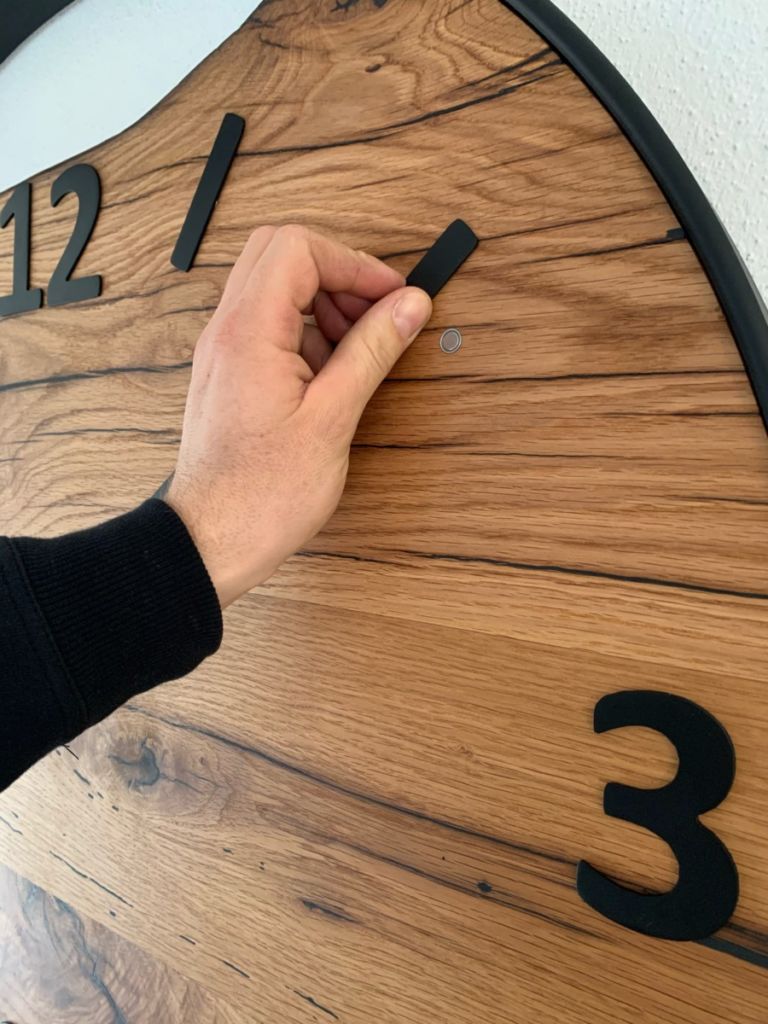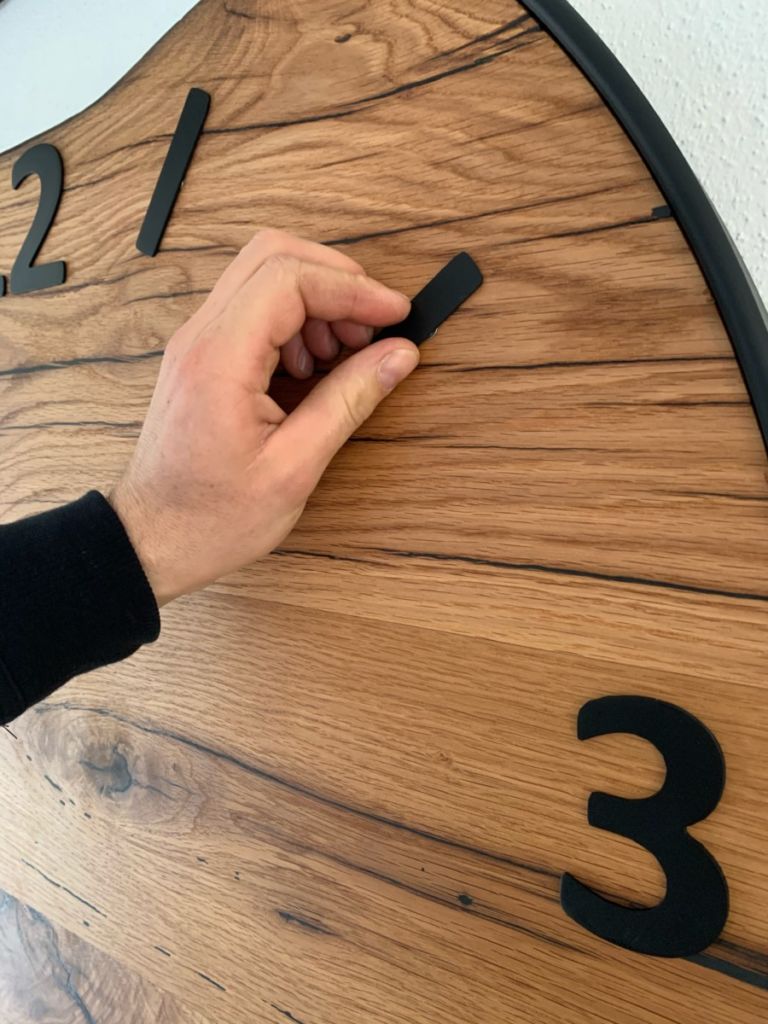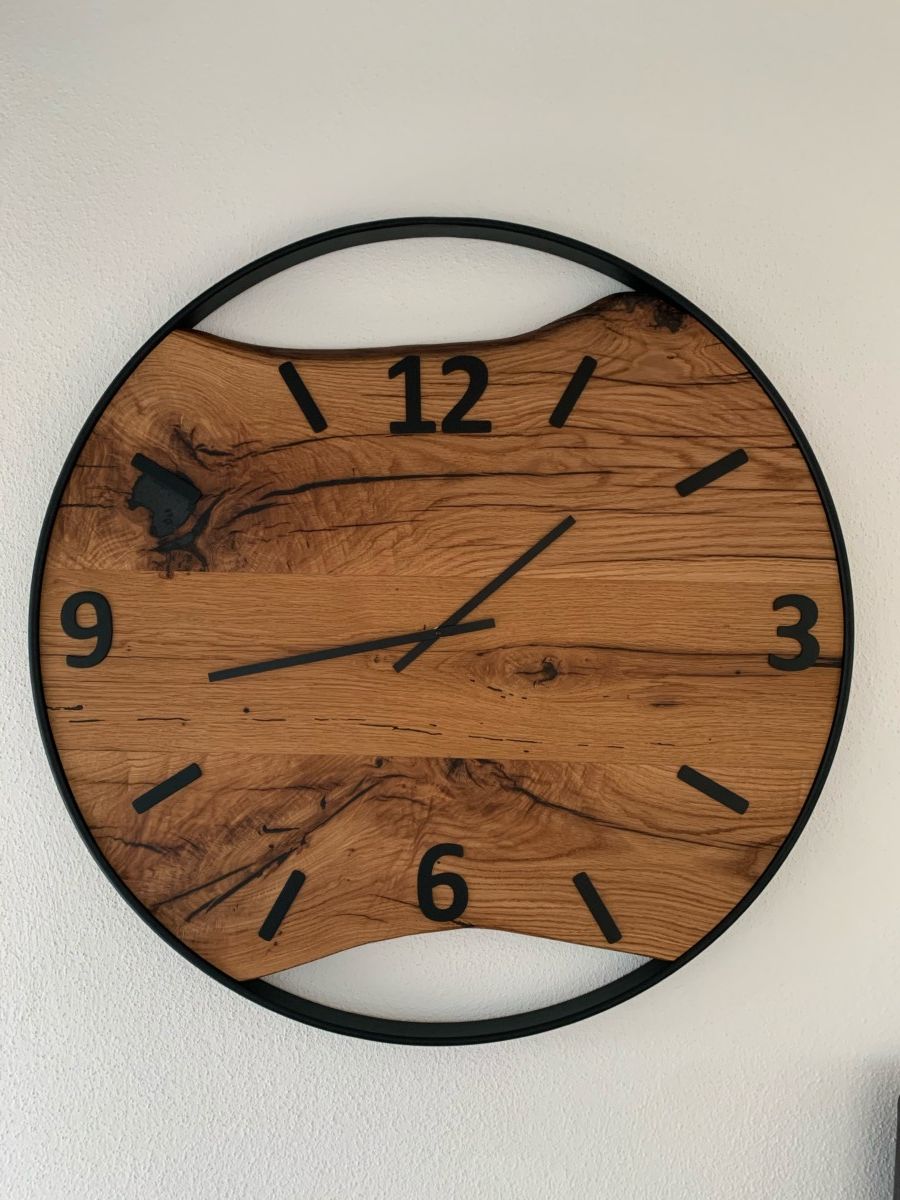After ordering magnets in our shop, our customers wanted to tell us about their DIY – attaching the digits of a wall clock.
We built a large wall clock (approx. 90 cm in diameter) and attached the digits with magnets.
We needed 13 neodymium pot magnets with a diameter of 10.0 x 4.5 mm (2.5 kg). These were pressed into the wood.
Attaching the digits of a wall clock – DIY
Our customers used a wooden base for this. They created color accents by using black pointers, digits and frame.
The pointers and digits of the clock were cut and grounded out of metal.
Pressing the pot magnets into the wall clock base creates a magnetic force of attraction that reliably holds the digits and pointers in place.
A very elegant DIY wall clock was created here with simple means and craftsmanship.
There are no limits to the visual design of your own clock. Let your creativity run free and create a real eye-catcher in your home, just like our customers have done.
Thank you for your creative magnet application – we are very excited about it!
Functioning of the neodymium pot magnets with steel pot:
The strong NdFeB magnets are installed in a steel pot. This metal housing protects the neodymium magnet from damage and increases the adhesive force. In order to achieve an optimal adhesive force, the pot magnet must rest directly on the metallic surface. A thin sheet of iron or paint can reduce the adhesive force very quickly. The adhesive force only acts on the open magnet side, since the steel pot shields the magnetic effect.
Here you will also find pot magnets with neodymium. You achieve a higher adhesive force with the same size with this version.
We also have the weaker version of the ferrite pot magnets in our range.
Special feature:
Due to the lack of a hole (mounting option), these pot magnets are often glued into suitable holes. The maximum operating temperature is 80 ° C





